Sorry, this entry is only available in European Spanish.
Tag Archives: latinoamérica
Free Solar Tools (IV)
On Internet we can find free tools for basic or low complexity solar systems dimensioning and for certain components or accessories estimation.
Sopelia research team has carried out an exhaustive search and testing from which a new corporate website section called Free Solar Tools has been created.
Selected tools were classified into 4 categories.
Today we will analyze the fourth of them: Solar Photovoltaic.
In the first category we have already analyzed tools to obtain data about solar resource and other variables to be considered in energy estimation solar system will provide in our location.
In the second category we have analyzed tools to calculate the “load”, ie the energy demand to be met.
In the third category we have analyzed tools for solar thermal systems dimensioning and system accessories estimating.
Now we are going to analyze tools for solar photovoltaic systems dimensioning and to estimate others individual components of a system.
The order of the tools is not random. We have prioritized the most intuitive, the most universal and those that can be used online without download.
For this fourth category our selection is as follows:
1) Solar Calculator
Approximate calculation tool from which budget, production data and system performance study is automatically obtained.
A Navigation Guide and Manuals can be found at page bottom.

2) Off-grid Solar Systems Calculator
Free online application for off-grid solar systems calculation.
It allows users to introduce new components from any manufacturer and product datasheets to be considered in the calculation.

3) Off-grid Systems Scale Calculator
Solar basic estimation of off-grid systems. Solar modules, batteries, controller and inverter calculation.

4) Solar Water Pumping Calculator
Calculator to obtain approximate energy needs figures for solar water pumping.

5) Solar & Wind Energy Systems Calculation
Tool which determines requirements to meet solar and / or wind contribution for electrification and pumping needs.

6) Grid Connected System Online Simulation
Online application to estimate production and economic income of a grid-connected system.
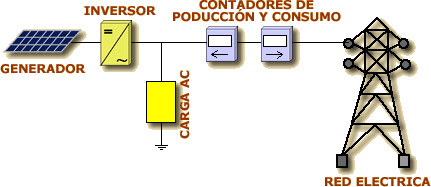
7) Battery Bank Capacity Calculator
Calculator to estimate battery bank size needed to keep consumption by solar operation.

8) Wire Section Calculator
Tool in JavaScript format for copper and aluminum DC wire calculation.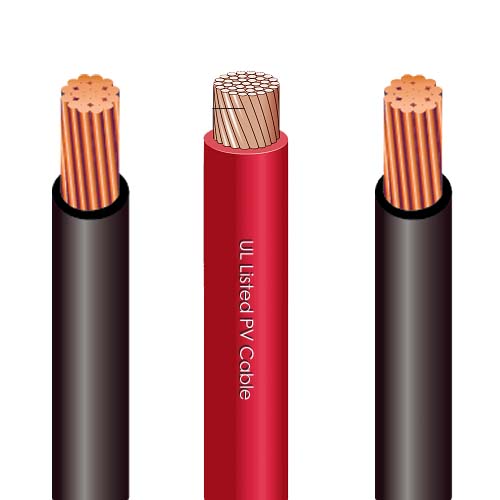
All you need is Sun. All you need is Sopelia.
The Solar Charge Controller
Charge controller is a device located between photovoltaic modules and batteries as an element of an isolated solar system.
Modules output voltage is set some volts higher than voltage battery needs to charge. The reason is to ensure that modules will always be able to charge the battery, even when cell temperature is high and generated voltage decreases.
This causes the drawback that once battery reaches its full charge state, module continues to try to inject energy producing an overload that, if not avoided, can destroy battery.
Charge controller is responsible for extending batteries life protecting them from overload situations, controlling load phases depending on their status and even reaching the cut depending on load needs of them.
Charge controllers may be working in one of the following situations:
– Equalization status: equalization of batteries charge, after a period of low charge.
– Deep charging state: regulation system allows charging until reaching final load voltage point.
– Float state: battery has reached a charge level close to 90% of its capacity.
– State of final charge and flotation: regulation system zone of action within Dynamic Flotation Band (range between final load voltage and nominal voltage + 10%).
To know which regulator to incorporate into a photovoltaic system it is necessary to know some elementary parameters.
First, one is isolated solar system nominal voltage. Batteries voltage and photovoltaic solar field define this voltage. Typical values are 12, 24, 48 and up to 60 volts.
The other parameter is photovoltaic modules system load current. It is recommended to multiply short circuit current Isc under standard conditions by 1.25 so that charge controller is always able to withstand current produced by modules.
Known system voltage and determined current value, we can choose the right charge controller. If there are still doubts, we can consult with provider technical department.
The simplest design is one that involves a single stage of control. Charge controller constantly monitors battery voltage but controls charge or discharge, never both. They are the cheapest and the simplest.
This can be achieved by opening the circuit between photovoltaic modules and battery (serial control) or by short-circuiting photovoltaic modules (shunt control).
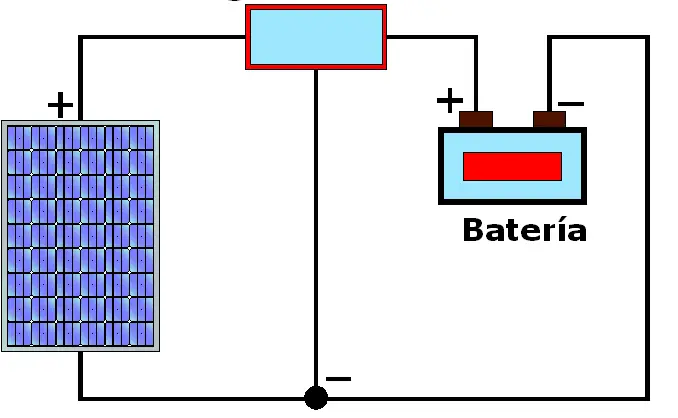
In case of controllers that operate in two control stages, the two functions are controlled, both charge and discharge of battery. They are more expensive, but they are the most used.
Current charge controllers introduce microcontrollers and control 3 and up to 4 control stages.
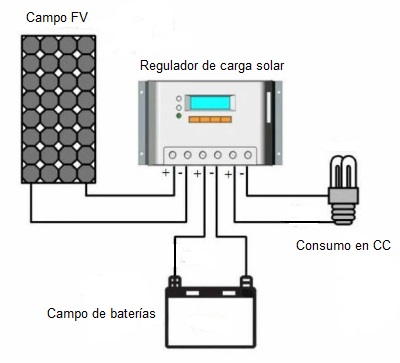
During last years a new generation of charge controllers has been developed, whose main characteristics are to make photovoltaic field work at maximum working point and to always render it optimally.
These charge controllers are known as power maximizers or MPPT.
Another advantage of these devices compared to conventional controllers is the possibility of working with a different voltage in the generator field (solar panels) and batteries.
This directly influences in being able to put several modules in series, elevating system tension.
Working with lower currents we can reduce considerably voltage drop losses and use smaller cable sections and therefore of lower price.
For the choice of a conventional controller or an MPPT, we have to assess cost overruns that these systems have compared to benefits that it gives us due to system performance increase. In some cases, annual power increase can reach up to 30% compared to conventional controller.

Charge controller may not be essential in installations where the ratio between modules power and battery capacity is very small (eg: oversized batteries for safety reasons) so that charging current can hardly damage battery.
If modules field power in W is less than 1/100 battery capacity in W / h, charge controller may not be incorporated.
It can also be dispensed with a charge controller if system has self-regulated solar modules (not recommended for extreme climates).
This is an extract of contents included in Technical-Commercial Photovoltaic Solar Energy Manual and Sopelia e-learning training.
All you need is Sun. All you need is Sopelia.
Free Solar Tools (III)
On Internet we can find free tools for basic or low complexity solar systems dimensioning and for certain components or accessories estimation.
Sopelia research team has carried out an exhaustive search and testing from which a new corporate website section called Free Solar Tools has been created.
Selected tools were classified into 4 categories.
Today we will analyze the third of them: Solar Thermal.
In first category we have already analyzed tools to obtain data about solar resource and other variables to be considered in energy estimation solar system will provide in our location.
In the second category we have analyzed tools to calculate the “load”, ie the energy demand to be met.
Now we are going to analyze tools to solar thermal system dimensioning and others to estimate individual components of a system.
The order of the tools is not random. We have prioritized the most intuitive, the most universal and those that can be used online without download.
For this third category our selection is as follows:
1) Solar Thermal Calculator
Approximate calculation tool from which budget, production data and system performance study is automatically obtained.
A Navigation Guide and Manuals can be found at page bottom.

2) Simulation for Solar Thermal System Pre-design
Online application based on the TSOL software that allows solar energy system simulating to ACS and ACS + heating contribute.
Available in German, English, Spanish and French.
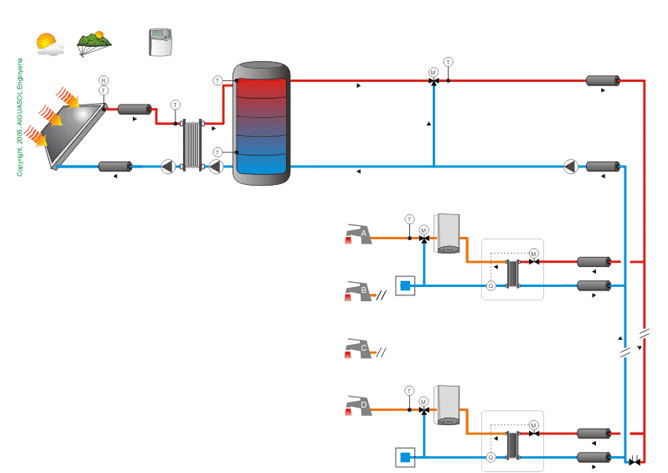
3) Solar Fraction Calculation
Free download program developed by IDAE (Institute for Energy Diversification and Saving) and ASIT (Solar Thermal Industry Association) that allows to define a wide variety of solar systems introducing a minimum of project parameters, associated to each system configuration; and in this way, obtain solar system coverage on ACS and pool conditioning energy demand.
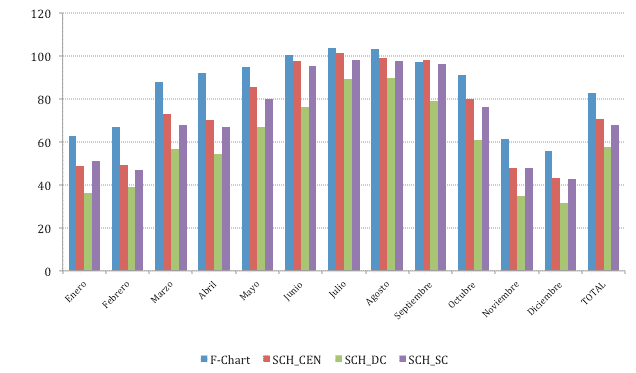
4) Solar Expansion Vessel Calculation
Tool developed to calculate solar expansion vessel volume.
Volume values (total circuit, solar collectors, pipes), Maximum system temperature (ºC), Glycol concentration (%), Height between expansion vessel and system highest point (minimum value 1 Bar) and safety valve Pressure setting must be introduced.
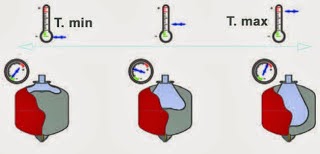
5) Thickness Insulation Pipes Calculation
Calculator that allows to estimate minimum and more economical water pipes insulation thickness.
Pipe Grade and Size, Insulation Material, Humidity and Temperature (Internal and Ambient) must be entered.
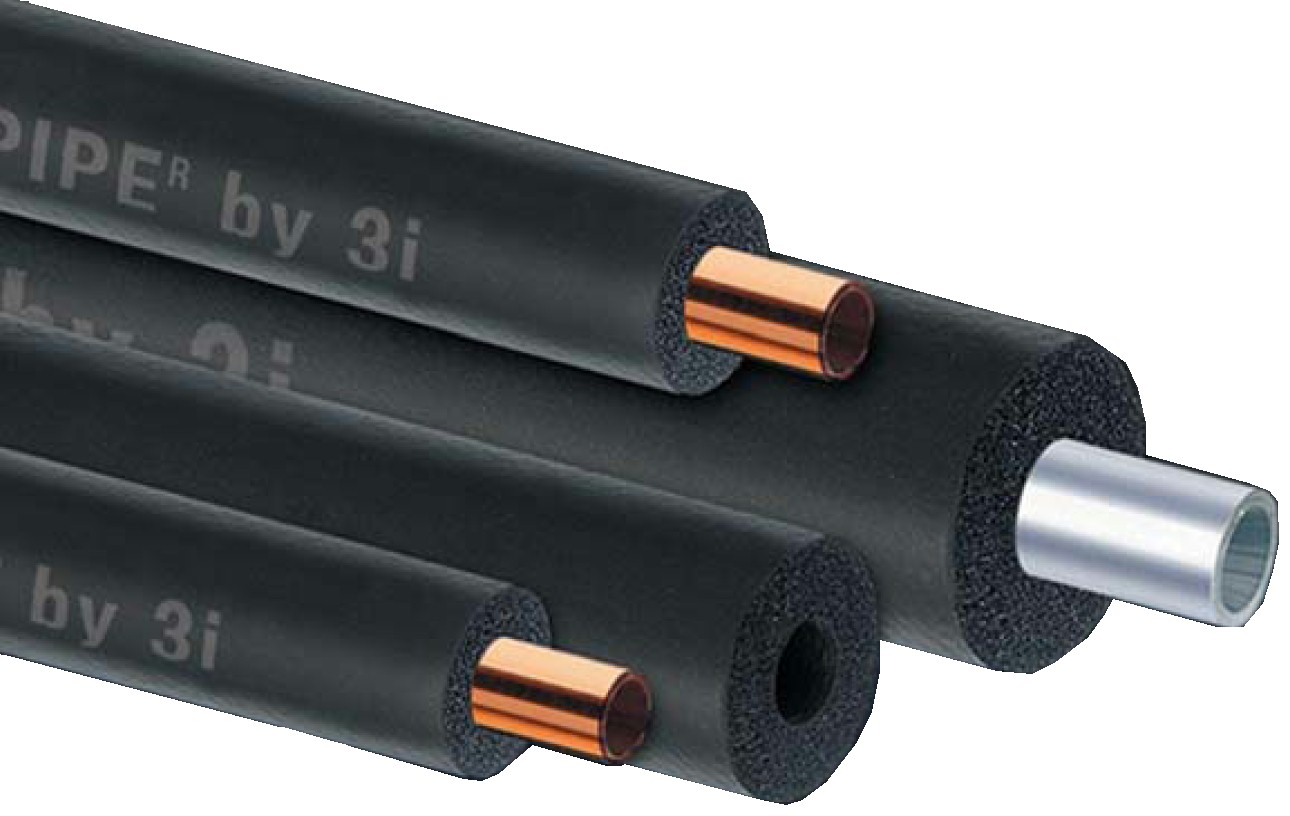
All you need is Sun. All you need is Sopelia.
Other Thermal Collectors
We have already talked about flat solar collectors and vacuum tube collectors.
Air collectors are also found in collectors without concentration category.
They are flat and their main characteristic is to have air as heat transfer fluid.
They do not have a maximum limit temperature (convective processes have less influence on the air) and work better in normal circulation conditions, but in contrast they have a low heat capacity and heat transfer process between plate and fluid is not good.
Its main application is heating.
Externally it is not possible to distinguish an air collector from a water collector. It is in the absorber where greatest differences are found. It has a rough shape and lacks the classic pipe of water collector ducts. The air circulates freely on absorber surface collecting the heat that it transforms.
Being a technology that has not been widely disseminated until now, there is no standardized solar collector model and each manufacturer makes its own model.
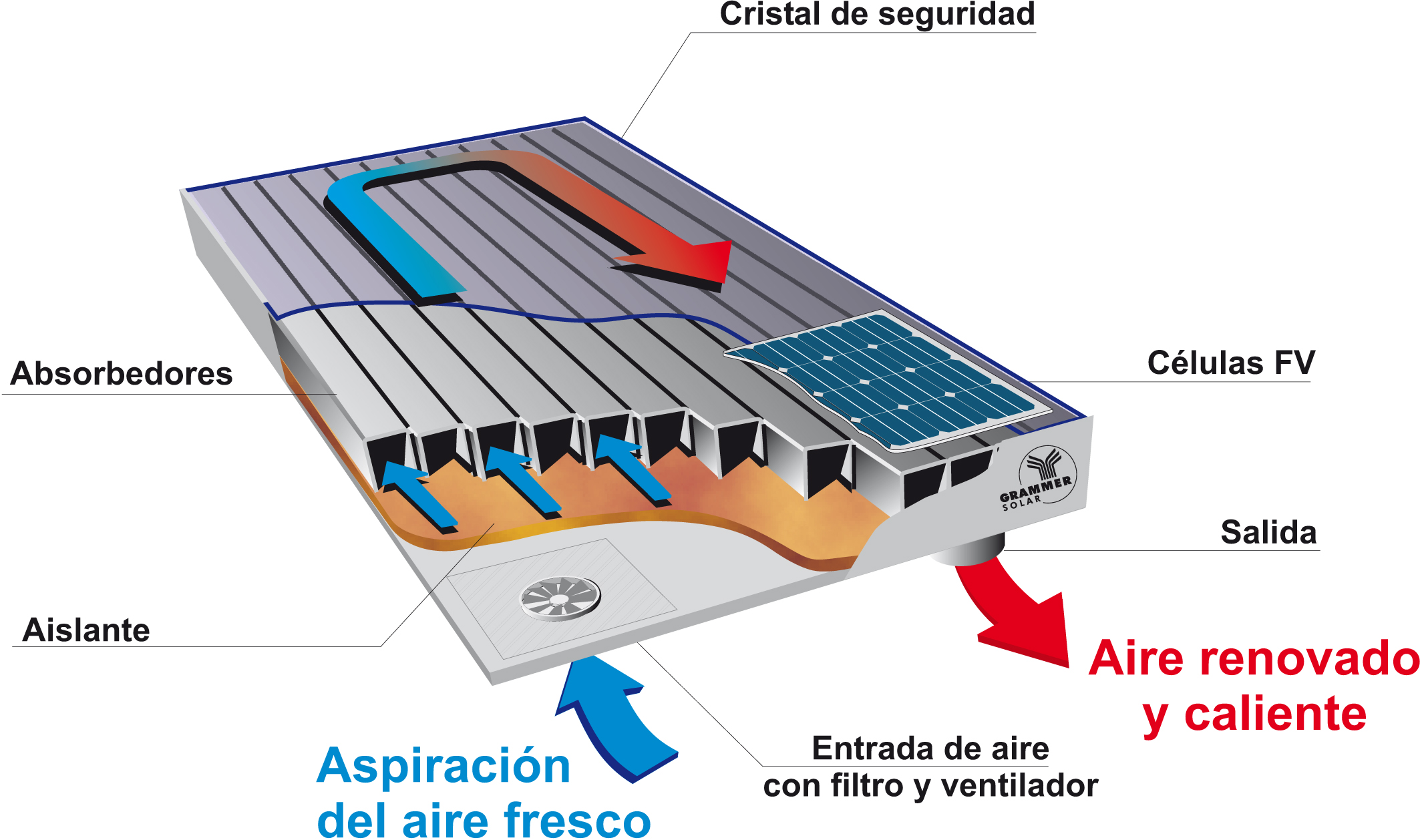
There are also conical or spherical thermal solar collectors.
Their main characteristic is that they simultaneously constitute collection and storage unit.
Its catchment surface is conical or spherical with a same geometry glass cover. With this form it is achieved that illuminated surface throughout the day, in shade absence, is constant.
Their installation is simple, but they present water stratification problems and useful catchment surface is small.
Its main application is sanitary hot water in single-family homes production and in very benign climates, since large storage surface, weather exposed, causes great energy losses.
Finally, in collectors without concentration category, we find outdoor swimming pools solar collectors.
They are made of rubber, polypropylene or polyethylene; and incorporate in their manufacturing process substances that protect them from plastics natural tendency to degrade under ultraviolet rays action.
They also carry other additives to protect them from chemical agents used in pool water purification. They have an acceptable night frosts resistance.
They are used mainly to heat pools water and thus be able to prolong its use for several more months.
These collectors do not have cover, neither with housing nor with insulating material. They are constituted by naked plate collector. This is because working temperature will not exceed 30ºC in any case and at this low temperature, radiation and conduction losses are very small, making it possible to dispense with covers and insulation.
It is not necessary to use any type of heat exchanger or accumulator, because pool water flows directly through collectors.
They need a frame because they are usually not rigid, but they can also be placed directly on a roof, or even on the ground. By being flexible, absorb surface irregularities on which they rest.
These equipment enjoy an approximate 10 years lifespan. They need little maintenance and there is little risk of corrosion, as they are synthetic.
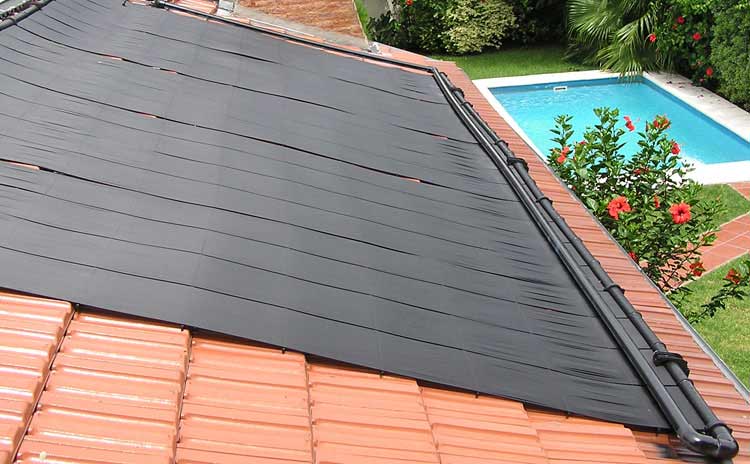
The second major group is that of solar collectors with concentration.
Its most common use is not at domestic level but in thermoelectric plants and facilities that work at medium and high temperature.
These collectors concentrate the solar radiation received in a very small surface receiving element (a point, a line).
Being smallest receiver and concentrated radiation, it allows a better solar energy absorption.
They are capable of providing temperatures above 300 ° C with good yields.
Concentration collector plants generate high temperature steam for industrial processes and to produce electricity.
There are concentration collectors of various types (tower, cylindrical-parabolic, Stirling engine).
Nevertheless, all of them have in common that they demand to be equipped, to be efficient, with a tracking system that allows them to remain constantly located in best position to receive the Sun’s rays throughout the day.
One of the drawbacks of most concentration collectors (and especially the cylindrical-parabolic) is that they only take advantage of Sun direct radiation, that is, they only take advantage of solar rays that actually hit their surface. They are not able, on contrary, to capture diffuse solar radiation.
Therefore, they are not convenient in climatic zones that, although they receive an acceptable solar radiation amount, are relatively cloudy. They are only effective in authentically sunny áreas.

This content was extracted from the Solar Thermal Energy Technical-Commercial Manual and is part of Solar e-learning.
All you need is Sun. All you need is Sopelia.
Honduras Solar PV
Honduras is a country where news about massacres, multiple forms of violence, corruption, instability and political intrigues usually comes out and in which two thirds of its 8 million inhabitants live in poverty while the 10% who receive higher salaries, accounting for 42% of national income and poorest 10% only receives 0.17%.
However, there is a sector in which Honduras stands out at regional level: renewable energies and, especially, solar energy.
Honduran government introduced fiscal incentives for photovoltaic installations in 2013.
A tariff supplement for first 300 PV MW that entered into operation before August 1, 2015 was also approved.
In 2015, Honduras and Chile were the largest PV markets in Latin America.
At the end of 2017, total private capital investment for PV plants construction exceeded US$ 1,600 million.
Investment has been divided into 12 solar plants that are already operational and add up to 405 MW; 39% of country’s private sector renewable capacity, amounting to 1,047.07 MW.
In general calculation, 61% of country’s energy comes from renewables, and in 2017 it became the first country in the world with 10% solar energy in its electric mix.

Most emblematic project is Nacaome-Valle Solar Park, which generates the energy consumed by some 150,000 Honduran families every day.
It has 480,480 modules with capacity to produce up to 125 MW of alternating current (AC) peak power.
It took more than 1,000 material containers, US$ 240 million in investment and the help of more than 1,200 employees who changed shifts without stopping, to build and start operating the plant in less than 2 years.
Photovoltaic modules receive the radiation to generate between 600 and 850 V, in CC form. With use of inverters, this energy is converted into AC, which passes through transformers to raise its Voltage to 34.5 kV and distribute it around the park.
Finally, this current is transmitted to plant electrical substation, where voltage rises to 230 kV to be transmitted throughout the country by Central American Electric Network, which arrives from El Salvador, passes through Honduras and goes to Nicaragua. .
The Nacaome solar plant has been an engine of economic, scientific and academic development for Honduras people and a monumental engineering work that has put Central American nation on sustainable energy industry international map.

Construction of Los Prados solar park, which would have 53 MW and should have started operations at end of 2016, is being halted by local residents protests who fear possible damage to their people caused by the park.
A solution is currently being sought between authorities and settlers, since everything is ready for work execution, but news is not encouraging.
All you need is Sun. All you need is Sopelia.
Solar Networking
Second year of the occasional meeting between an expert in solar energy and another in digital marketing is completed.
On these dates we usually look back 12 months to make balance:
* Blog that you are reading now is still full working.
It includes a research work on solar sector in Latin American region. Right now we are analyzing Honduras.
Three posts from each of the 20 countries of the region describe their renewable energy matrix, their solar thermal sector of domestic applications and their photovoltaic sector.
Also included are contents about solar technology, latest information and new developments.
* The web-based e-learning platform Moodle 3.1 that allows you to receive solar energy training from your PC, Tablet or Smartphone wherever you are; has finished its fourth edition.
* The 3 ebooks exclusively sold on Amazon (Introduction to Solar Energy) and Casa del Libro (Technical Manual-Commercial of Solar Thermal Energy and Technical-Commercial Manual of Solar Photovoltaic Energy) continue to be a success.
* Solar Layout downloads continue to increase, the most intuitive solar app on the market for collectors and solar modules positioning at the installation site.
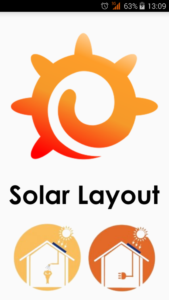
* We continue to actively participate in projects management and development (not only in Latin America).
* We continue to commercialize equipment and turnkey solutions for solar thermal, photovoltaic and solar lighting.
* Sopelia has been Media Partner of most important solar energy events at regional level.
All this was possible thanks to changes and transformations that in IT, telecommunications and work sectors have occurred in recent years.
Currently professionals situated in different locations can create, exchange information, interact in a virtual way, develop and manage projects.
Work teams are flexible. They are born, transformed and mutated depending on business opportunities.
The fuel for all this to work has been a powerful solar and linked sectors professionals and companies networking that increases day by day with Social Media impulse.

What we could call “stable cast” is the following:
+ Marcelo Ferrari – CEO
+ Nahuel Rull – Argentina Country Manager
+ Tomás Ruiz – Solar Thermal Energy Expert
+ Francisco Ramírez – Photovoltaic Solar Energy Expert
+ Federico Redin – Facilities Expert
+ Dante Fiorini – Digital Marketing Expert
+ Rafael Chacón Almeda – E-learning Expert
+ Antonio Vites – SEO & SEM Expert
+ Sergio Fernandez Alonso – Programming and Apps Development Expert.
We want to wish you a prosperous 2018 in which we hope to continue collaborating in your solar energy projects and count on you to continue tending the Sopelia Network.
Free Solar Tools (II)
On Internet we can find free tools for basic or low complexity solar systems dimensioning and for certain components or accessories estimation.
Sopelia research team has carried out an exhaustive search and testing from which a new corporate website section called Free Solar Tools has been created.
Selected tools were classified into 4 categories.
Today we will analyze the second one: Consumption Calculation.
In first category we have already analyzed tools to obtain data about solar resource and other variables to consider in estimating energy solar system will provide in our location.
Now we are going to analyze tools to calculate the “load”, that is, the energy demand to be satisfied.
Tools order is not random. We have prioritized the most intuitive, the most universal and those that can be used online without download.
For this second category our selection is as follows:
1) Housing heating calculation
Approximate calculation tool developed by the Ministry of Industry, Energy and Mining of Uruguay.
Consider the variables surface, heating technology, materials, openings, insulation and roof.
Data that interests us to solar thermal system dimensioning is kcal / month.
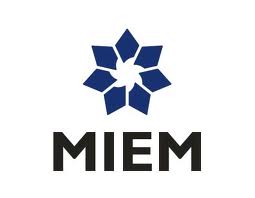
2) Advanced Energy Efficiency Calculator
Tool to make detailed calculations of house energy consumption.
It includes a general table (all devices), a groups table (device families) and a configurable table (custom).
Last one is a version in which you can modify table data and know more accurately your particular case.
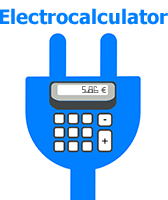
3) Hot water, heating and pool conditioning demand calculation
Spreadsheet for hot water, heating and swimming pool conditioning demand estimation.
Only Spain localizations are deployed, but can be used as template and adapt to any location by manually solar resource and other starting data entering.
Inputs: location, number of occupants and occupant’s consumption, temperature of use, collector’s number.
Outputs: collector surface, inclination, accumulation volume, yields and savings, demand and coverage calculation and comparative graphs.
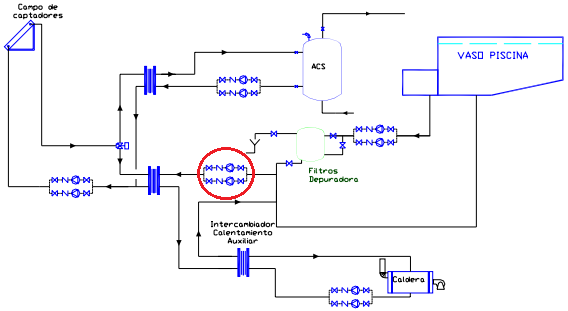
4) Electrical consumption calculation
Only available for PC.
Cannot be viewed from mobile devices (Smartphone / Tablet).
Application developed by the Ministry of Energy and Mines of Peru to estimate electricity consumption based on each device power (W) and hours of use number.

5) Energy consumption calculator
Very easy operation online free basic calculator.
Different electrical devices, their power, and their daily use regime are added.

Accessing Free Solar Tools section of Sopelia’s corporate website you will find the links to have these tools and begin to configure your future solar system.
All you need is Sun. All you need is Sopelia.
Honduras Solar Thermal
Honduras is one of the 148 countries in the world with best solar energy generation potential; however, solar thermal energy barely wakes up from several decades of stagnation and at present, its participation is not relevant in the national energy matrix.
Solar thermal energy has a unique competitive potential in the “Sunbelt” countries, characterized by high levels of solar radiation and, often, high prices in energy tariffs.
In Honduras, Choluteca and Valle are the areas with greatest solar energy generation potential, since a maximum annual average of 8.4 hours per day is registered.
February, March and April are the months of greatest solar energy availability in the country, in February there is up to 9.1 sunshine hours on average per year for country southern area.
Other places with high solar potential are in part of Lempira department and Francisco Morazán southern area.
As it happens in almost all Latin American countries, there is no solar thermal energy development according to its enormous potential.
Its performance is twice that of photovoltaic solar energy and is the purest expression of distributed generation.
In Honduras, its implantation in residential sector is scarce and there are only isolated cases in commercial and industrial sectors.
An example is the meat plant where a solar thermal system was installed to heat sanitizing water in production area, trays and tables cleaning, pigs blanching, slaughter tools sterilization, sausages cooking and smoking.
Water volume consumed was classified into two types: sanitation and processes.
The advantage of working with the solar thermal system is basically that a volume of preheated water is given to the boiler system.
Initial thermal variation of 20º to 165º C is reduced to a thermal variation of 90º to 165º C, this 70º C difference in temperature is equivalent to the saving (48% in average) provided by solar thermal system as complementary to industrial boiler system.
Another example is the dairy plant in which a solar thermal system was also installed.
In this case, energy efficiency measures were previously applied to reduce hot water consumed volume.
Main one was industrial water guns withstand temperatures higher than 100 ° C implementation.
A thermal solar system with heat pipe collectors was installed, which contributes to sanitization processes and boiler water consumption.
In year highest radiation times, system can cover 97% of monthly boiler water consumed, and 82% on maximum consumption day.
It can also provide up to 90% of total water consumed for production area sanitization.
It can even provide hot water at 42º C for yoghurt preparation.
Solar thermal energy potential in Honduras and in Latin America in general is currently not being exploited.
An exhaustive project survey and analysis allow us to know, a priori, savings will be obtained, initial investment and the generally low maintenance costs.
All you need is Sun. All you need is Sopelia.
Free Solar Tools (I)
On Internet we can find free tools for basic or low complexity solar systems dimensioning and for certain components or accessories estimation.
Sopelia research team has carried out an exhaustive search and testing from which a new corporate website section called Free Solar Tools has been created.
Selected tools were classified into 4 categories.
Today we will analyze the first one: Solar Resource and Other Baseline Data.
In this category we will find data about solar resource and other variables to consider in order to estimate the power that solar system will provide in our location.
It is the starting data for necessary solar system dimensioning in order to satisfy our energy demand.
Tools order is not random. We have prioritized the most intuitive, the most universal and those that can be online used without download.
For this first category our selection is the following:
1) Meteorological and solar energy data
Sponsored by NASA Science Applications Program and developed by the World Prediction Energy Resources Project, this site offers information and supporting documentation for solar systems dimensioning.
The “Data Retrieval” section that interests us is “Meteorology and Solar Energy” and within it, “Data Tables for a Particular Location”.
Once there, entering Latitude and Longitude of our location, we access a series of calculation parameters that we can select or obtain entirety.

2) Daily and annual solar calculator
Spreadsheet developed by US NOAA Earth System Research Laboratory based on Jean Meeus astronomical equations algorithms.
It allows to calculate solar day, year and location specific data.

3) Renewable energies Global Atlas
Geographic Online Information System (GIS) interrelated worldwide distributed centers data.
In addition to information about renewable energy resources you can access information such as population density, topography, land use, infrastructure and protected areas.
The objective of this system is to allow users to identify areas of interest for further exploration.
It is an initiative that involves national institutes, energy agencies, private companies and international organizations.

4) Opensolar
Open database (you can extract and insert information) with global average daily solar radiation data for each month of the year measured on the surface.

5) Monthly average radiation calculation
Tool developed by IDEA research group to calculate monthly average radiation on arbitrarily oriented and inclined surfaces.

Accessing Free Solar Tools section of Sopelia’s corporate website you will find the links to have these tools and begin to configure your future solar system.
All you need is Sun. All you need is Sopelia.
